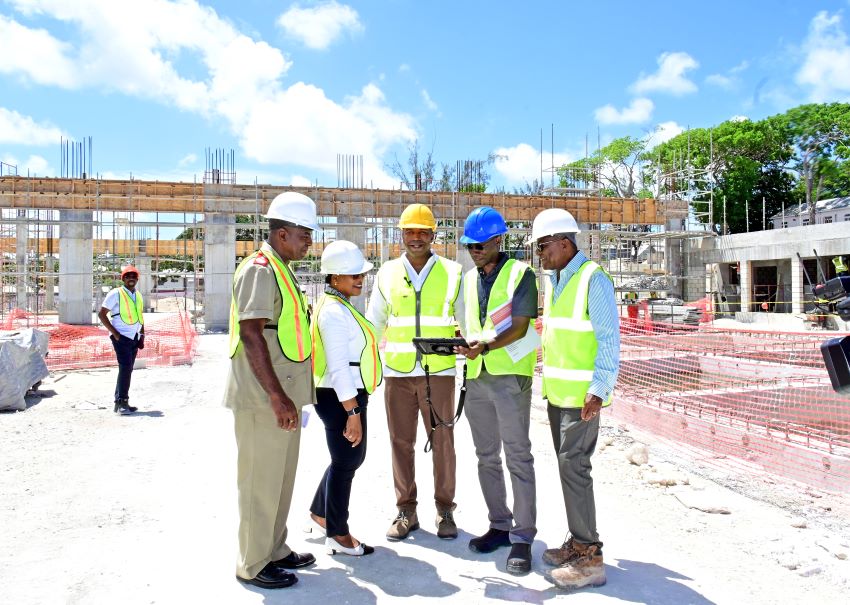
The relocation of the Barbados Fire Service’s (BFS) headquarters and Bridgetown Station to The Pine, St. Michael, will have no impact on the response time to emergencies.
Minister of Home Affairs and Information, Wilfred Abrahams, explained that disaster modelling revealed that Bridgetown was at high risk for tsunamis and severe flooding and damage from hurricanes, and it was more ideal for the bulk of emergency services to be away from The City.
He made this disclosure ahead of a tour of the construction site for the building that will house the BFS headquarters, the Barbados Ambulance Service and the Bridgetown Fire Station this morning.
“The decision to move up onto a hill of higher elevation was not by accident. It is not simply the ability to respond to a fire in Bridgetown that is of concern, [but], it is also the ability to preserve the station…,” he said.
The Minister said that once the facility located in the Pine was completed, and the facility at the Port of Bridgetown, the City area would be “more than well serviced” if anything should happen.
Meanwhile, acting Chief Fire Officer, Henderson Patrick, supported this view, noting that the move was not only a benefit to the BFS, but also to businesses and the people of Barbados.
He said that one of the concerns raised was the response time of the BFS to incidents occurring in The City. But he assured the public that tests carried out to determine the response times going and coming from The Pine, St. Michael, showed that it was no more than five to seven minutes depending on the type of appliance used.
“That is within the range of response time that is expected for a fire station responding to structures that are involved. The response from here to The City area does not present an unusual challenge for the business community in The City area, because the response timeframe falls within what is expected in the industry,” he said.
However, the acting Fire Chief pointed out that the response of the BFS was only one factor that contributed to the safety of persons.
He stressed that what was important was how people responded to an emergency in their own environments. “In addition to having a fire station and conducting a response which is necessary, we also do education [sessions] and we invite the business owners to be responsible…to ensure that they have fire safety mechanisms in place, to ensure that they train their staff.”
He added that building construction was another aspect that was critical, as the BFS made recommendations for people to have firewalls and other facilities to reduce the spread of fire and increase the level of safety for persons.
“All of these things are additional factors that will help in containing and controlling incidents,” Mr. Patrick said.
